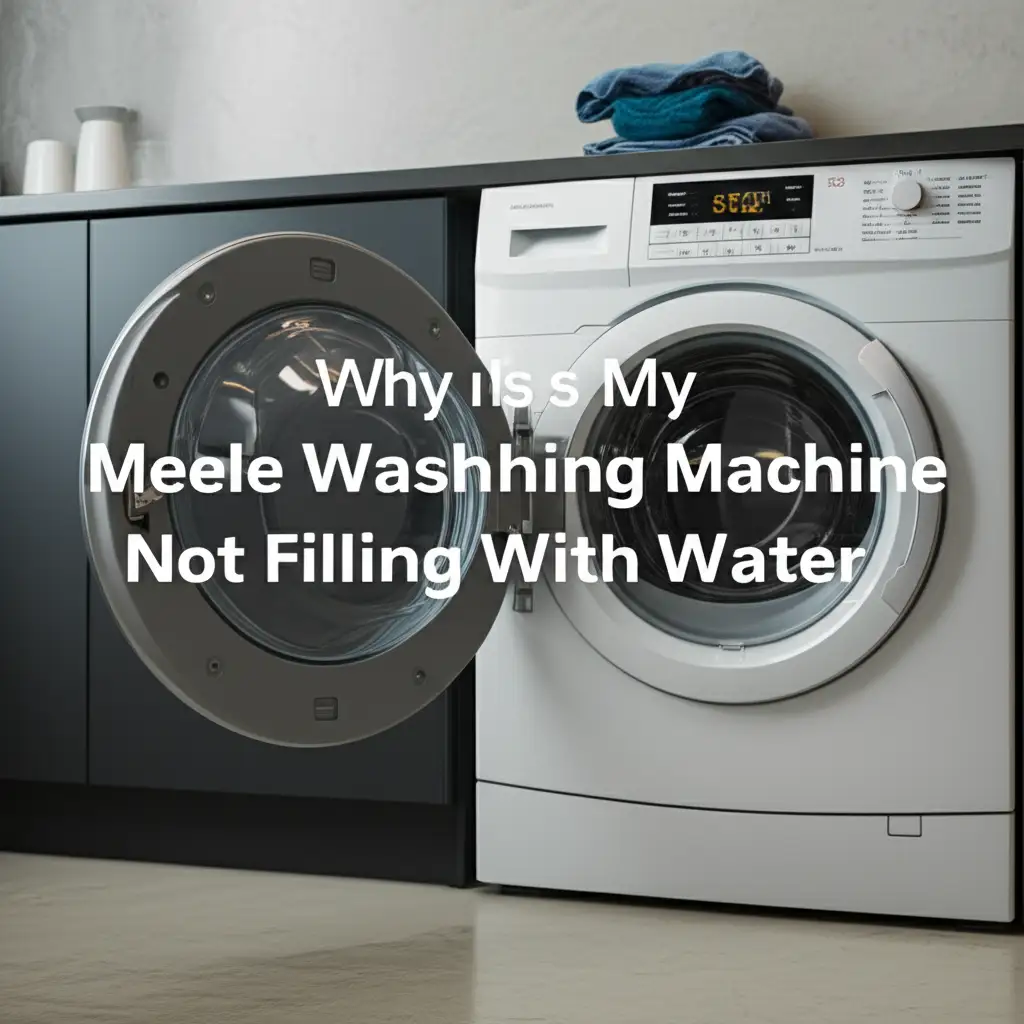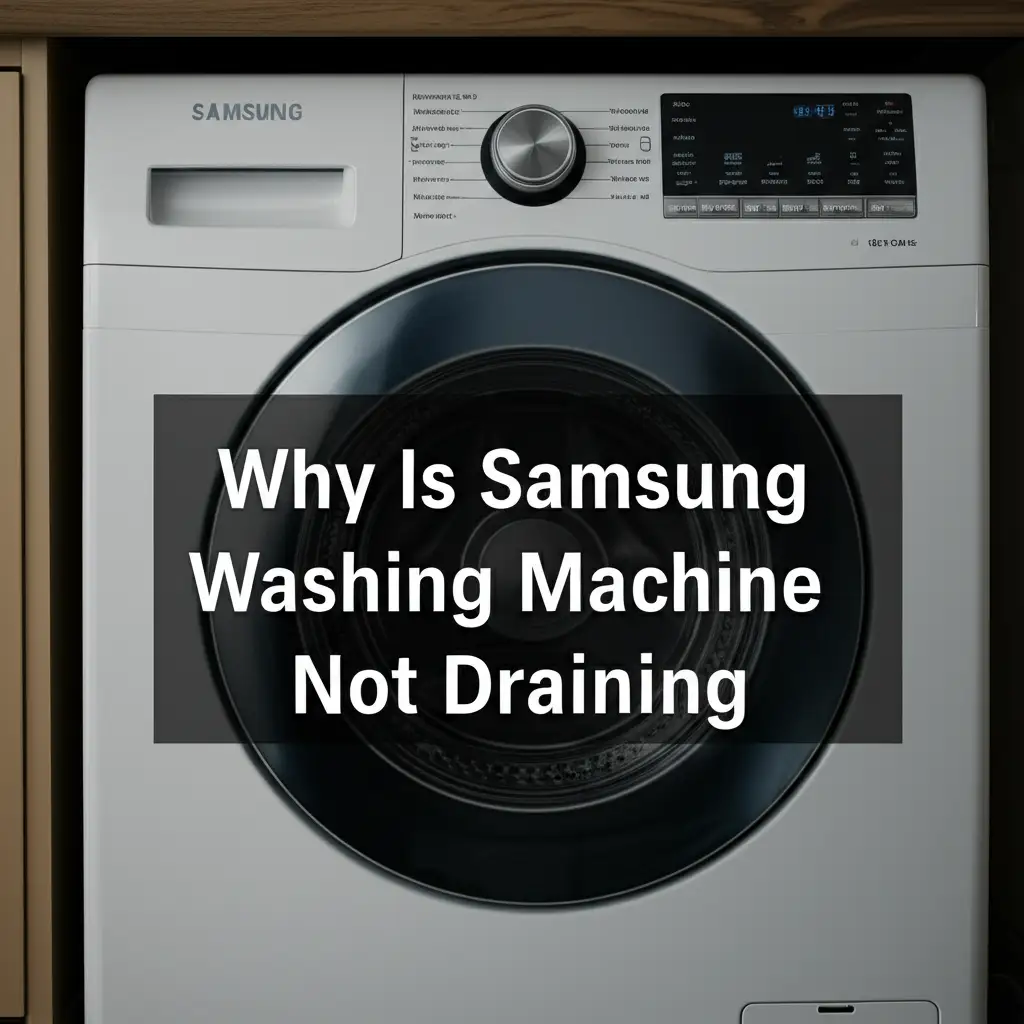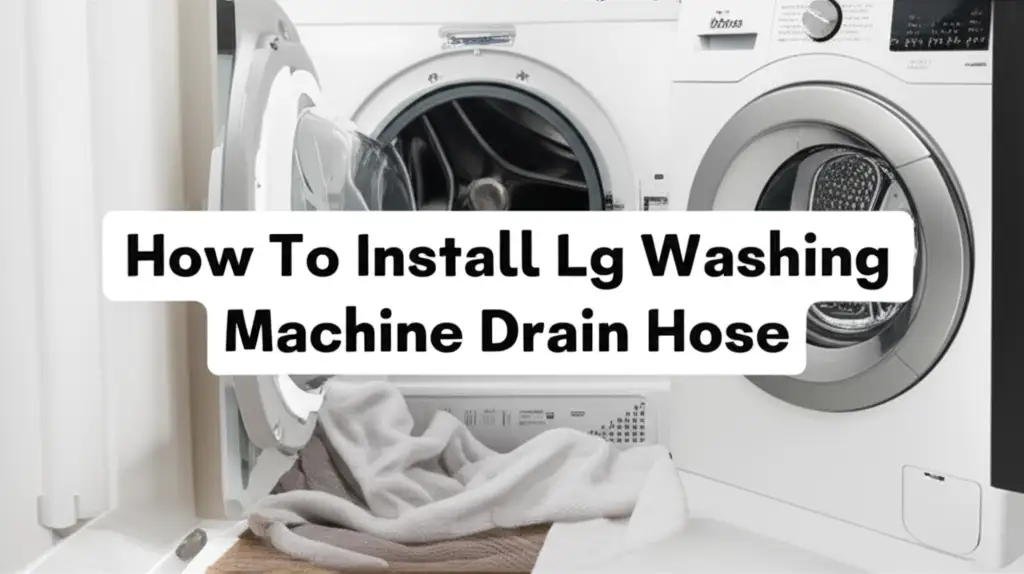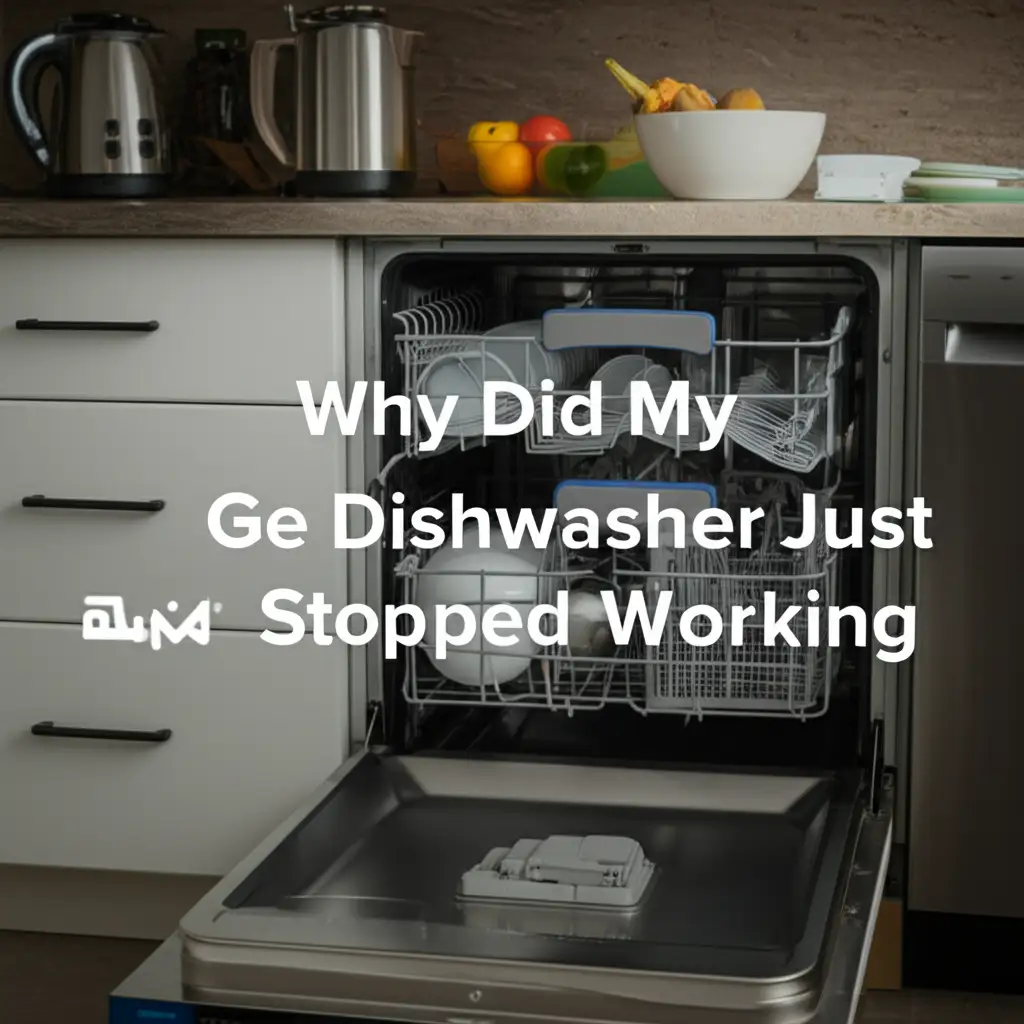· Kianna Connelly · Home Appliances · 19 min read
Why Has My Miele Washing Machine Stopped Working
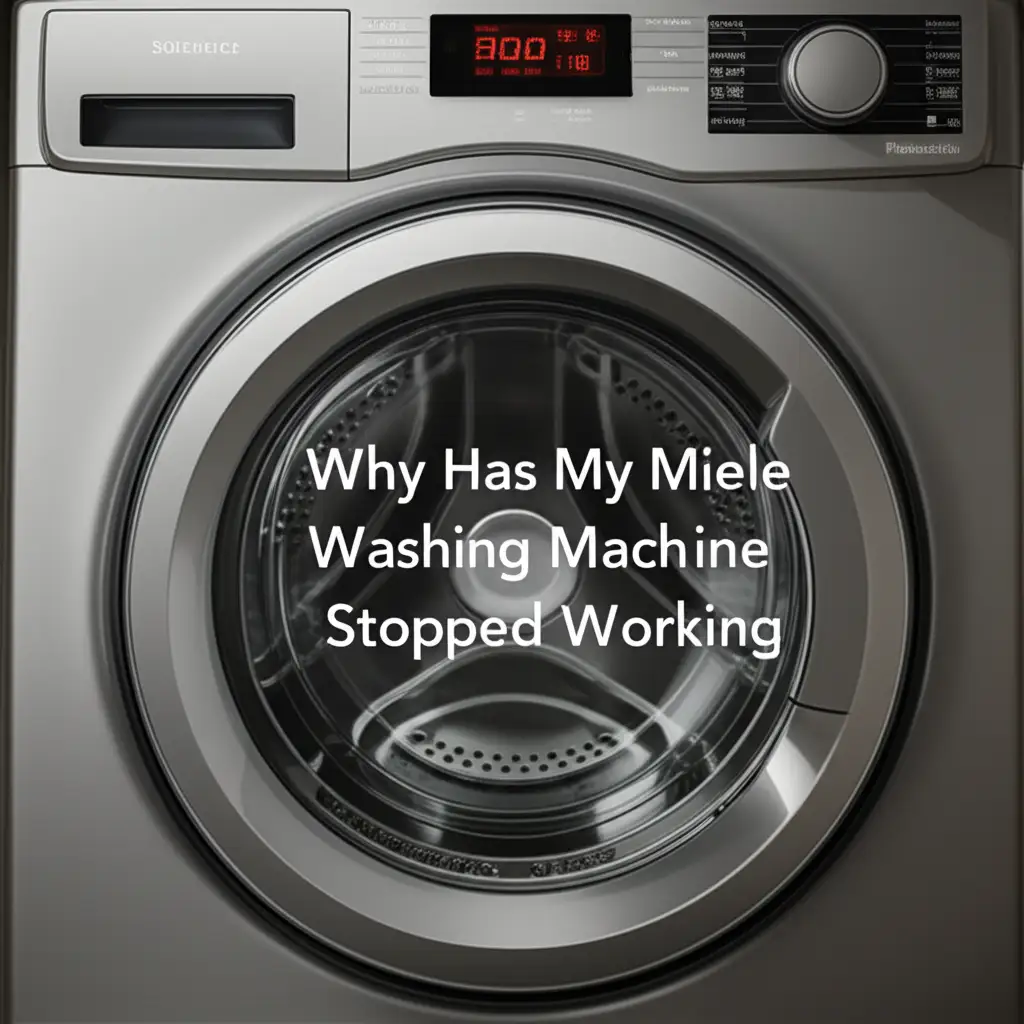
Why Has Your Miele Washing Machine Stopped Working?
You load your clothes, press start, and… nothing happens. There’s nothing worse than when your Miele washing machine stops working. These machines are known for their quality, so it can be puzzling when they suddenly falter. I understand how frustrating this can be, especially when you rely on your appliance for daily tasks.
This article will help you understand common reasons why your Miele washing machine might have stopped working. We will look at simple checks you can do yourself before calling a technician. From power issues to drainage problems, we will cover the main culprits. By the end, you will have a clear path to getting your Miele back in action.
Takeaway
- Check the power supply first, including outlets and circuit breakers.
- Inspect water supply hoses and filters for blockages.
- Clean the drain pump filter and check for drain hose obstructions.
- Verify the door lock mechanism is fully engaged.
- Consult the user manual for specific error codes and troubleshooting steps.
When your Miele washing machine has stopped working, it often points to a basic issue with power, water supply, drainage, or the door lock. Addressing these common problems with a few simple checks can often resolve the fault quickly. For more complex issues like motor or electronic control problems, professional service may be necessary.
Understanding Miele Power Problems
One of the first things to check if your Miele washing machine has stopped working is its power supply. It might seem obvious, but a disconnected plug or a tripped breaker happens more often than you think. Always start your troubleshooting here before moving on to more complex checks. I always begin by confirming the machine is receiving electricity.
No Power to Your Miele Washer
If your Miele washing machine shows no signs of life, start by looking at the power cord. Make sure it is plugged firmly into the wall outlet. Sometimes, a loose connection is all it takes to stop the machine. You can also test the outlet itself by plugging in another small appliance, like a lamp.
Next, check your home’s electrical panel. A tripped circuit breaker can cut power to the washing machine. Look for any breaker that is in the “off” position or in between “on” and “off.” Flip it completely off, then back to the “on” position. If the breaker trips again immediately, there might be an electrical fault within the machine or the circuit. For more details on power issues, you can learn more about why your Miele washing machine has no power.
Internal Electrical Issues
Beyond the outlet and breaker, internal electrical components can fail. A faulty power cord, a damaged power switch, or issues with the main control board can prevent the machine from starting. These components carry the electricity that powers the entire unit. If these parts are not working, your Miele washing machine will simply not turn on.
Diagnosing these specific issues often requires a multimeter and some electrical knowledge. If you are not comfortable with electrical testing, it is best to call a qualified technician. Tampering with internal electrical parts can be dangerous. Safety is always the most important thing when dealing with any appliance that runs on electricity.
Water Supply and Inlet Valve Faults
A Miele washing machine needs water to start its cycle. If the machine has stopped working, or seems stuck, the water supply is a good place to investigate. Lack of water can prevent the cycle from starting or cause the machine to pause indefinitely. I have seen many times how simple water issues can stop a wash cycle cold.
Checking Water Hoses and Taps
First, make sure both hot and cold water supply taps are fully open. Sometimes, a tap can be accidentally turned off or not opened completely after other work. Check the hoses connected to the back of your Miele washing machine. Ensure they are not kinked, twisted, or squashed. A bent hose will restrict water flow, causing the machine to stop.
Also, look for any visible damage or leaks in the hoses. Over time, hoses can degrade and crack. Make sure the hose screens, located where the hoses connect to the machine, are clean. These small filters can get clogged with sediment from your water supply. A clogged filter will prevent water from entering the machine. If your Miele washing machine is not filling with water, these checks are crucial.
Inlet Valve Malfunction
The inlet valve is an electrical component that opens to allow water into the drum. If this valve fails, no water will enter the machine, and the cycle will not proceed. You might hear a humming sound, but no water will flow. The valve can become clogged with mineral deposits or simply fail electrically.
Testing an inlet valve usually involves checking its electrical continuity with a multimeter. If the valve is not receiving power or is not opening, it will need replacement. This is a common part that can wear out. Replacing the inlet valve typically requires disassembling part of the machine, so professional help might be needed here.
Drainage and Pump Obstructions
Your Miele washing machine cannot finish its cycle if it cannot drain water properly. If your machine stops mid-cycle, especially with water still in the drum, a drainage issue is likely the cause. I always check the drain system when a machine stops unexpectedly. Proper drainage is key for any washing machine to work correctly.
Clogged Drain Pump Filter
The drain pump filter traps small items like coins, lint, and buttons that come off clothes. This filter is usually located at the bottom front of your Miele washing machine, behind a small access panel. If this filter becomes clogged, water cannot drain, and the machine will stop or show an error code. Regularly cleaning this filter prevents many drainage problems.
To clean it, first make sure to place a shallow tray or towels underneath, as some water will come out. Unscrew the filter slowly and carefully remove any debris. It is surprising how much lint and small items can accumulate here. After cleaning, screw the filter back in tightly to prevent leaks. Many instances of your Miele washing machine leaking from the bottom can be traced back to an improperly sealed or clogged drain pump filter.
Blocked Drain Hose
The drain hose carries wastewater from the washing machine to your home’s drainpipe. This hose can become kinked, clogged with lint, or obstructed by foreign objects. Check the entire length of the hose for kinks or blockages. Make sure it is not pushed too far into the standpipe, which can create a siphoning effect or restrict drainage.
Remove the drain hose from the standpipe and check for any obstructions. You can try to flush it out with water or use a snake to clear it. If the blockage is within the machine’s internal drainage system, it might be more challenging to access. A faulty drain pump itself could also be the problem, preventing water from being expelled. If the pump is making unusual noises or no noise at all when it should be running, it might need replacement.
Door Lock and Latch Mechanisms
A washing machine’s door must be securely closed and locked for a cycle to start or continue. This is a safety feature to prevent water from leaking out and to stop access to the spinning drum. If your Miele washing machine has stopped working and the door seems loose or won’t lock, this is a likely culprit. I have seen many times where a simple door issue prevents the whole cycle.
Faulty Door Latch or Striker
The door latch is the part on the door itself that engages with the door lock assembly on the machine’s body. If the latch is bent, broken, or misaligned, it may not properly engage with the lock. This prevents the machine from registering that the door is closed and secure. Visually inspect the latch for any damage.
Similarly, the striker, which is the metal or plastic piece that the latch catches onto, can also become worn or damaged. If either of these parts is not working correctly, the door will not fully close or lock. You might be able to gently adjust the door or the strike plate if it is slightly misaligned. This can sometimes solve the problem without needing a replacement part.
Malfunctioning Door Lock Assembly
The door lock assembly is an electrical component inside the machine that receives a signal to lock the door. It also tells the main control board that the door is safely closed. If this assembly fails, the machine will not start or will stop mid-cycle. You might hear a click but the door won’t lock, or you might hear nothing at all. This is a common point of failure for washing machines.
A faulty door lock assembly often needs to be replaced. This involves opening the machine’s outer casing to access the part. If your Miele washing machine door is not unlocking, or not locking at all, this component is highly suspect. Sometimes, a power surge can damage this part. If the machine loses power mid-cycle, you might need to know how to open a Miele washing machine door without power to remove your laundry.
Drum and Motor Malfunctions
When your Miele washing machine stops working and is no longer spinning or agitating, the problem might lie with the drum or motor components. These parts are crucial for the washing action itself. A machine that fills with water but does not move the clothes has a significant internal problem. I pay close attention to the sounds the machine makes when diagnosing these issues.
Drive Belt Issues
Most washing machines use a drive belt to transfer power from the motor to the drum. Over time, this belt can become loose, stretched, or even break. If the belt is the problem, the motor might run, but the drum will not turn. You might hear the motor humming without the drum moving, or even a slapping sound if the belt is loose.
Checking the drive belt usually requires removing the back or side panel of the Miele washing machine. Inspect the belt for any cracks, fraying, or signs of slippage. If it’s broken, it will need a replacement. If it’s simply loose, some models allow for tension adjustment, but often a stretched belt indicates it’s past its prime and should be replaced. If your Miele washing machine is not spinning properly, the drive belt is a prime suspect.
Motor or Carbon Brush Failure
The motor is the heart of your Miele washing machine, responsible for spinning the drum. If the motor fails, the machine simply won’t perform its wash or spin cycles. Common motor problems include electrical shorts, worn-out bearings, or failure of the motor’s control module. In some older Miele models, carbon brushes within the motor can wear down over time.
These brushes conduct electricity to the motor’s rotating parts. When they wear out, the motor loses power and may stop working entirely or operate intermittently. Replacing carbon brushes is a common repair for brush-based motors. However, modern Miele machines often use brushless motors, which are more durable and do not have carbon brushes. If the motor itself has failed, it’s a more complex and costly repair, often requiring professional assistance.
Electronic Control Unit and Display Problems
Modern Miele washing machines rely heavily on electronic control units to manage all functions. These are like the brain of the appliance, dictating when and how each component operates. If your Miele washing machine has stopped working without an obvious mechanical fault, an electronic issue is a strong possibility. I find that electronic faults can be the trickiest to diagnose without specialized tools.
Control Board Malfunctions
The main control board, also known as the PCB (Printed Circuit Board), is responsible for interpreting your selections and sending commands to all the machine’s components. Power surges, age, or manufacturing defects can damage this board. A faulty control board can lead to various problems, such as the machine not starting, stopping mid-cycle, or displaying incorrect error codes.
Sometimes, a simple reset of the machine can fix minor electronic glitches. You can try unplugging the washing machine for 5-10 minutes, then plugging it back in. This can clear temporary errors. If the problem persists, however, a component on the board might be burnt out, or the entire board might need replacement. Replacing a control board is typically expensive and requires a technician.
Display and Sensor Issues
While not always directly causing the machine to stop working, problems with the display or sensors can lead to cycle interruptions or prevent operation. If your Miele washing machine display is not working, you might not be able to select a program or see error codes. This effectively stops you from using the machine.
Internal sensors, such as the water level sensor or temperature sensor, provide critical information to the control board. If a sensor fails, the board might receive incorrect data, leading to the machine stopping or behaving erratically. For example, a faulty water level sensor might tell the machine the drum is full when it is not, preventing it from filling or starting a wash. Diagnosing sensor issues usually involves checking their resistance with a multimeter and comparing readings to specifications.
User Error and Maintenance Neglect
Sometimes, the reason your Miele washing machine has stopped working is not a fault with the machine itself. Instead, it can be due to simple user errors or a lack of proper maintenance. These are often the easiest problems to fix. I always consider user practices as a key diagnostic step.
Overloading the Machine
Putting too many clothes into the washing machine is a very common mistake. Overloading can prevent the drum from spinning freely, strain the motor, and even cause the machine to stop mid-cycle. Miele washing machines are designed with specific load capacities. Exceeding this can activate safety features that pause or halt the wash.
Always check your Miele’s user manual for the recommended load size for different programs. A good rule of thumb is to leave a hand’s width space between the top of the laundry and the inside of the drum. This allows clothes to tumble freely and get properly cleaned without stressing the machine’s components. If your machine stopped right after loading, try removing some items and restarting it.
Incorrect Detergent Usage
Using the wrong type or too much detergent can also cause issues. Non-HE (High Efficiency) detergents produce too many suds in a Miele machine, which is designed for low-sudsing HE detergents. Excessive suds can trigger overflow sensors, causing the machine to pause or stop. It can also leave residue in the machine and on clothes.
Always use a high-efficiency (HE) detergent with your Miele washing machine. The “HE” symbol indicates that the detergent produces fewer suds. Also, follow the detergent manufacturer’s and Miele’s recommendations for dosage. Using too much detergent does not make clothes cleaner; it often causes more problems. For more information, you can read about whether you can use any detergent with a Miele washing machine. Regular cleaning cycles help remove detergent residue buildup.
Lack of Regular Cleaning
Neglecting regular maintenance can lead to blockages and component failures. Lint and soap scum can build up in various parts of the machine, including the detergent dispenser, drain pump, and hoses. This buildup can restrict water flow, impede drainage, or cause parts to malfunction.
Run a maintenance wash cycle (usually a hot wash with no clothes and a cleaning agent or white vinegar) periodically. Clean the detergent drawer regularly to prevent mold and detergent residue buildup. Also, wipe down the door seal and leave the door ajar after each wash to prevent mildew. These simple steps extend the life of your Miele washing machine and prevent many issues that could cause it to stop working.
Error Codes and Diagnostics
When your Miele washing machine stops working, it often displays an error code. These codes are not just random numbers; they are specific messages from the machine’s internal diagnostic system. Understanding these codes is crucial for knowing why your machine stopped and what steps to take next. I always advise checking the display first for any codes.
Deciphering Miele Error Codes
Miele appliances have a range of unique error codes that point to specific problems. For example, a code like “Water inlet/drain” indicates an issue with water supply or drainage. A code such as “Motor fault” directly tells you there is a problem with the motor. Your Miele user manual contains a full list of these codes and their meanings. It is your primary resource for understanding what your machine is trying to tell you.
When you see an error code, note it down immediately. Then, refer to your manual. The manual will often provide simple troubleshooting steps specific to that code. Sometimes, a reset or a basic check (like cleaning a filter) is all that is needed. If the manual’s suggestions do not resolve the issue, the code still gives a technician a strong starting point for diagnosis.
Performing a Diagnostic Test
Some Miele washing machines have a built-in diagnostic mode. This mode allows the machine to run through a series of internal checks and report any detected faults. Accessing diagnostic mode varies by model, but it usually involves a specific combination of button presses. This feature is very helpful for identifying problems that are not immediately obvious.
Consult your Miele owner’s manual for instructions on how to enter diagnostic mode for your specific model. During the diagnostic test, the machine will test different components, such as the pump, motor, and valves. It may display additional error codes or highlight areas of concern. This can help confirm if a particular part has failed or if the issue is intermittent. If you are unsure about performing a diagnostic test, it is always safer to contact Miele support or a certified service technician.
Professional Repair vs. DIY Solutions
Deciding whether to attempt a repair yourself or call a professional is an important choice when your Miele washing machine has stopped working. Some problems are simple fixes, while others require specialized tools, knowledge, and experience. I weigh the cost, complexity, and safety when making this decision.
When to Attempt DIY Repairs
You can safely attempt several DIY checks and repairs. These include:
- Power Supply Checks: Verifying the plug, outlet, and circuit breaker.
- Water Supply Checks: Ensuring taps are open, hoses are not kinked, and inlet filters are clean.
- Drainage Maintenance: Cleaning the drain pump filter and checking the drain hose for blockages.
- Door Checks: Inspecting the door latch for obvious damage or misalignment.
- Basic Resets: Unplugging the machine to clear temporary electronic glitches. These actions are low-risk and often resolve common issues. They also do not typically require special tools or deep knowledge of internal components.
When to Call a Professional
For more complex issues, it is always best to call a certified Miele technician. These situations include:
- Internal Electrical Component Failure: Issues with the main control board, motor control, or wiring. These involve high voltage and specialized testing.
- Motor or Bearing Problems: Replacing a motor or internal bearings is a complex task. It requires significant disassembly and specific tools.
- Water Inlet Valve or Drain Pump Replacement: While possible for some DIYers, accessing and replacing these parts can be tricky and may lead to leaks if not done correctly.
- Recurring Issues or Unknown Error Codes: If the problem persists after basic troubleshooting or you cannot identify the error code, a professional diagnosis is needed.
- Warranty Concerns: Attempting complex repairs yourself might void your Miele warranty. Always check your warranty terms first.
A professional technician has the right tools, diagnostic equipment, and Miele-specific training. They can quickly and accurately diagnose the problem and perform the repair safely. While it costs money, it can save you time, effort, and potentially prevent further damage to your premium appliance.
FAQ Section
Q: Why did my Miele washing machine suddenly stop mid-cycle? A: Your Miele washing machine might stop mid-cycle due to a power interruption, an imbalance in the load, or a drainage issue. It could also be a problem with the door lock not staying engaged or an error code signaling a malfunction. Check your power supply and the drain pump filter first.
Q: What is the most common reason a Miele washing machine stops working? A: The most common reasons a Miele washing machine stops working are problems with power supply (unplugged, tripped breaker), water supply (closed taps, kinked hoses), or drainage issues (clogged filter, blocked hose). These are usually the easiest problems to check and fix yourself.
Q: How do I reset my Miele washing machine if it stopped working? A: To reset your Miele washing machine, unplug it from the power outlet for about 5 to 10 minutes. This allows the electronic control unit to clear any temporary errors. After waiting, plug it back in and try to start a new cycle. This simple step can often resolve minor glitches.
Q: My Miele washing machine has power but won’t start a cycle. What could be wrong? A: If your Miele washing machine has power but won’t start, check the door latch and lock to ensure they are fully engaged. Also, verify that the water supply taps are open and hoses are not kinked. A specific error code on the display might also point to the underlying issue.
Q: Can overloading cause my Miele washing machine to stop working? A: Yes, overloading your Miele washing machine is a common reason for it to stop working. Too many clothes can prevent the drum from spinning correctly or strain the motor, activating safety features that pause or halt the cycle. Always adhere to the recommended load capacity for your model.
Q: What do I do if my Miele washing machine displays an error code and stops? A: If your Miele washing machine displays an error code and stops, immediately consult your user manual. The manual provides the meaning of specific codes and suggests troubleshooting steps. Follow these steps carefully, and if the issue persists, contact a qualified Miele service technician for further diagnosis and repair.
Conclusion
Having your Miele washing machine stopped working can certainly be a disruption. However, as we’ve explored, many common issues have simple solutions you can try yourself. From ensuring your machine has power to checking water supplies and cleaning filters, these initial steps can save you time and money. I always recommend starting with the easiest checks first.
Remember, proper maintenance and understanding basic operational guidelines are key to a long-lasting appliance. If your Miele washing machine still gives you trouble after these troubleshooting steps, do not hesitate to contact a qualified Miele service technician. They have the expertise to diagnose and fix more complex internal issues, ensuring your Miele machine is back to washing clothes efficiently. Taking action now will help you get your laundry routine back on track.
- Miele washing machine
- washing machine repair
- Miele troubleshooting
- appliance not working
- Miele common faults


